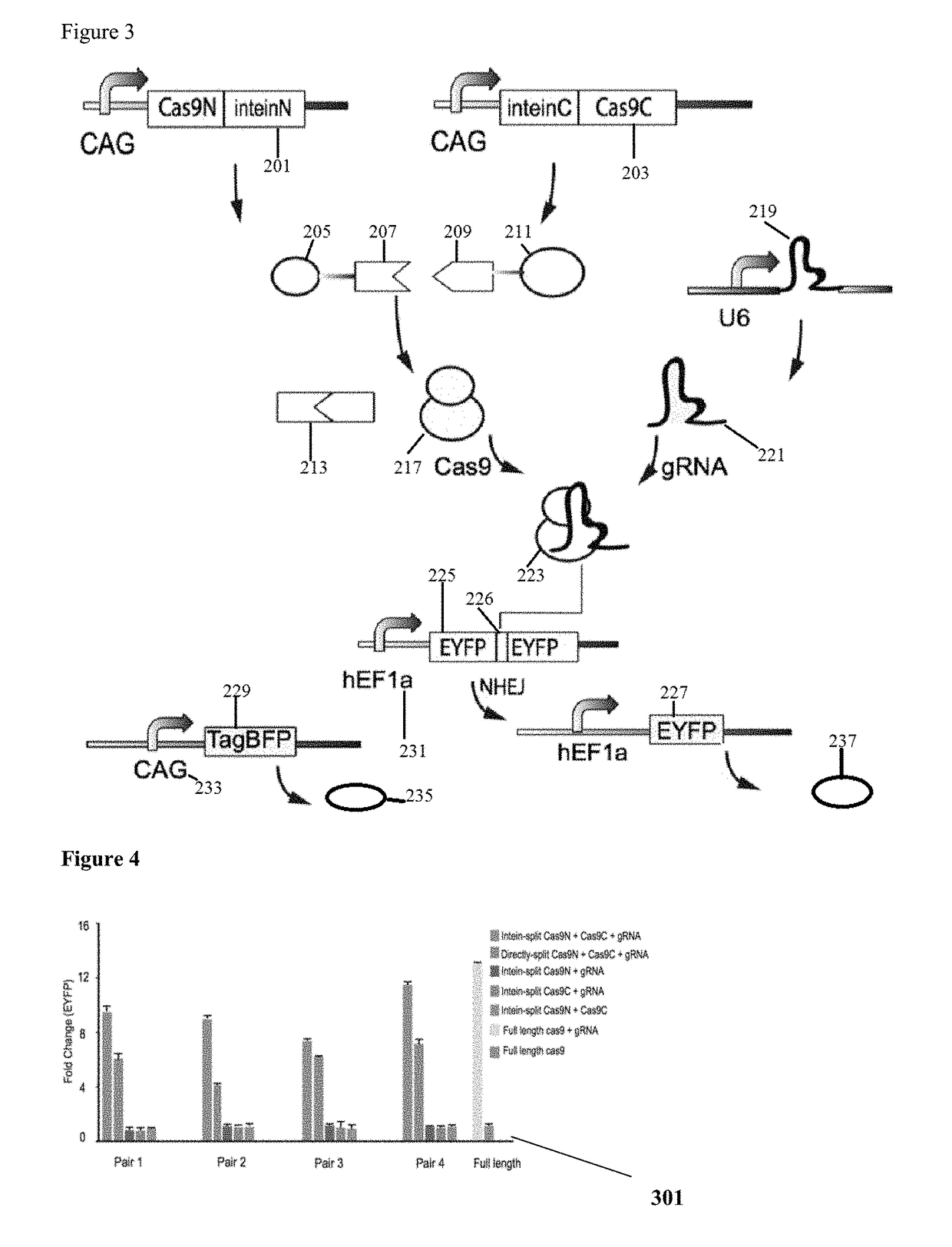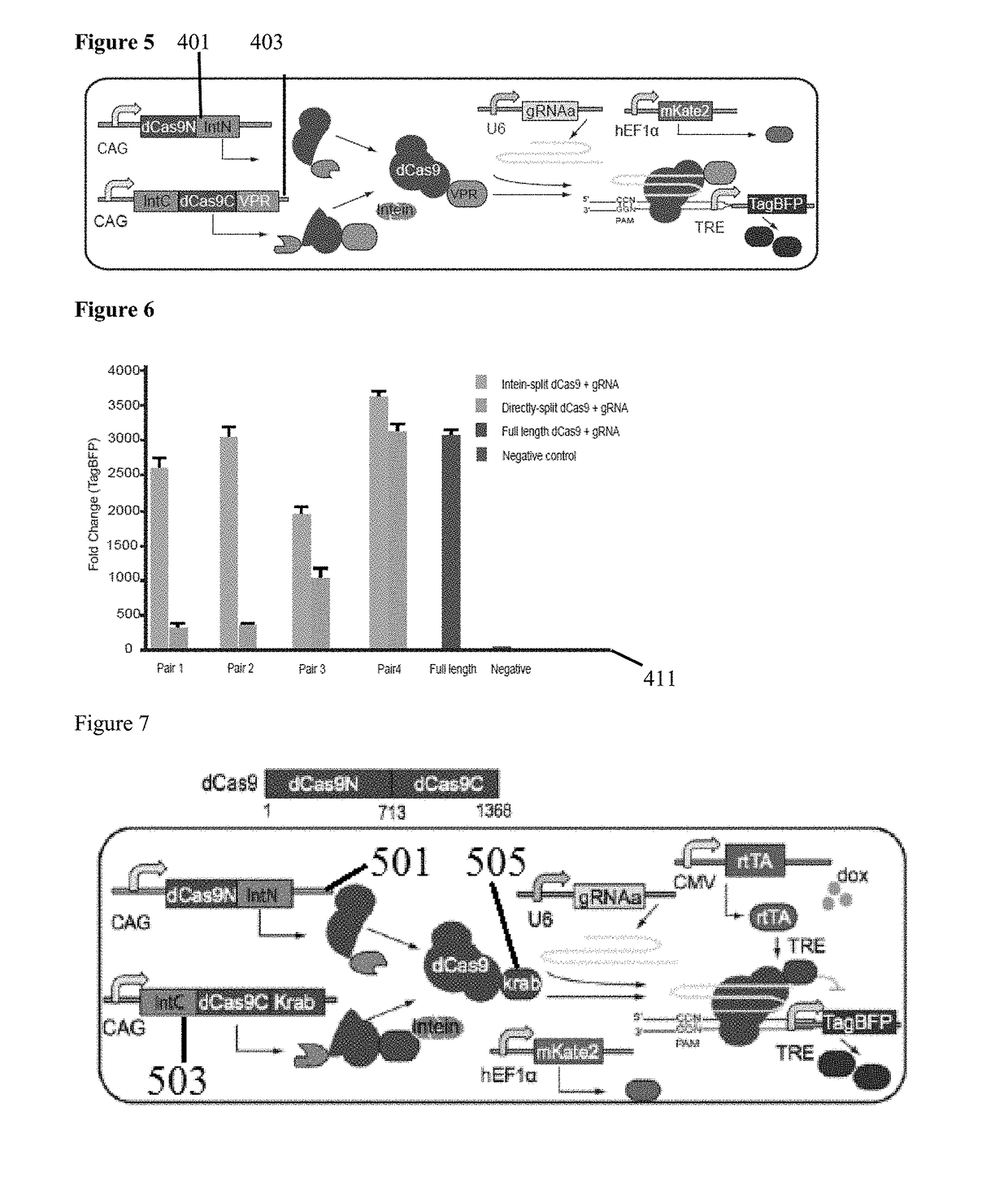Genetic indicator and control system and method utilizing split Cas9/CRISPR domains for transcriptional control in eukaryotic cell lines
a transcriptional control and transcription indicator technology, applied in the direction of dsdna viruses, peptides, genetic material ingredients, etc., can solve the problems of inability to use the crispr/cas system to the greatest potential, physical size limitation, undesired strong immune response, etc., and achieve the effect of reducing the size of synthetic circuits
- Summary
- Abstract
- Description
- Claims
- Application Information
AI Technical Summary
Benefits of technology
Problems solved by technology
Method used
Image
Examples
Embodiment Construction
[0056]FIG. 1 is a schematic representation of Cas9 (100) with pair 1-4 split site locations (111, 112, 113, 114) to aid in illustrating functional reconstitution of split Cas9 domains. According to the Cas9 sequence and structural information the split sites are selected where serine is at the +1 amino acid position when fused to the C-terminal Intein fragment. All four selected split sites are surface residues and located in the loop region, which can be more accessible for intein trans-splicing reaction and have less effect on the protein folding. In the illustrative example, eight pairs of split Cas9 constituents are constructed that either fuse to the N-terminal (IntN) and C-terminal (IntC) split inteins or not. The Cas9-DNA targeting specificity is determined by both the Cas9-associated guide RNA (gRNA) and a short protospacer adjacent motif (PAM) directly downstream of the DNA recognition site. The Streptococcus pyogenes Cas9 (SpCas9) protein usually consists of a recognition ...
PUM
| Property | Measurement | Unit |
|---|---|---|
| size | aaaaa | aaaaa |
| physical size | aaaaa | aaaaa |
| Blue Fluorescent Protein | aaaaa | aaaaa |
Abstract
Description
Claims
Application Information
 Login to View More
Login to View More - R&D
- Intellectual Property
- Life Sciences
- Materials
- Tech Scout
- Unparalleled Data Quality
- Higher Quality Content
- 60% Fewer Hallucinations
Browse by: Latest US Patents, China's latest patents, Technical Efficacy Thesaurus, Application Domain, Technology Topic, Popular Technical Reports.
© 2025 PatSnap. All rights reserved.Legal|Privacy policy|Modern Slavery Act Transparency Statement|Sitemap|About US| Contact US: help@patsnap.com



